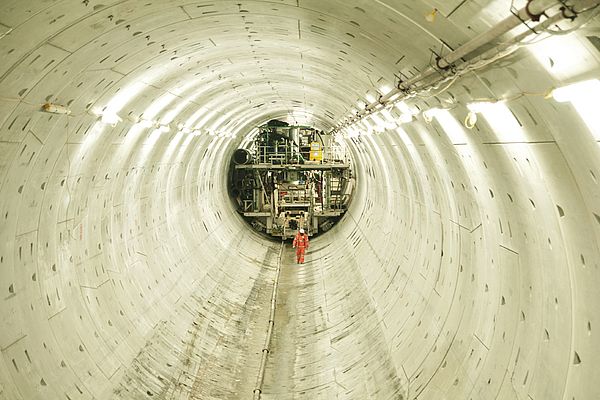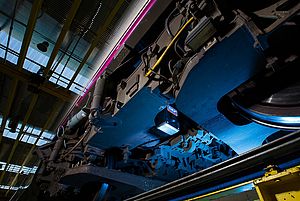London has a colourful history of sewage disposal. In the 1850s, its residents dumped 400,000 tonnes of sewage into the River Thames each day, or around 150 million tonnes a year. The stench became so overpowering at times that Parliament, meeting in the shadow of Big Ben on the banks of the river, had to be suspended in the summer of 1858, in an event known as the Big Stink.
In response, the government built a sprawling network of sewers and treatment plants designed to accommodate the needs of a population of 4 million. This Victorian-era apparatus still forms the backbone of the city's sewerage system today, but it has to serve a population twice as large.
The British capital has now embarked on an ambitious undertaking, called the Thames Tideway project, to expand and update the system. The solution, costing some 4.6 billion British pounds (6.2 billion euros), is designed to last well into the 22nd century.
A key part of the project, called the Lee Tunnel, runs for nearly seven kilometres under the London borough of Newham. At 75 to 80 metres below the surface, it is the deepest tunnel ever bored in London.
GIW Industries, based in the US state of Georgia, has built six vertical centrifugal slurry pumps for the Lee Tunnel project. Each GIW Minerals pump, with an impeller of 2.13 metres in diameter, weighs more than 45 tonnes.
The tunnel is essentially an extremely large storage tank that captures overflow during heavy rains, keeping contaminated water from flowing into the River Lee when sewage treatment plants are running at full capacity. Then, when there is free capacity, the pumps pump the water out of the tunnel and send it to the treatment plant.
"A centrifugal pump uses a shaft-driven rotating impeller to add energy to the fluid," says Brian Prochaska, chief engineer at GIW. "It draws water into the inlet and increases the pressure. Each Lee Tunnel pump is driven by a 3.4-megawatt motor with a variable speed drive, which enables storm water to be pumped out of the 80-metre-deep tunnel at flows of up to 3 cubic metres per second."
"GIW pumps are made out of a special wear-resistant white iron that we cast here ourselves," he says. "We're one of the few foundries in the world that can produce white iron pumps in such large sizes."
The pumps can handle abrasive material that would destroy an ordinary stainless-steel pump in a matter of hours, he says. The Lee Tunnel pumps are expected to last many years without any significant wear. In addition, they are designed to handle solid objects as large as a basketball. This feature is important since the Lee Tunnel is designed to capture storm water overflow, which can include everything from rocks to shoes to beer cans.
The Lee Tunnel, whose cost is estimated at 635 million British pounds (860 million euros), is an international undertaking. The tunnel-boring machine, as wide as three London double-decker buses and nicknamed Busy Lizzie, was made in Germany. GIW, the US-based pump manufacturer, is a wholly owned subsidiary of Germany's KSB AG, and SKF supplied the bearings and lubrication systems for the pumps.
"Building a vertical pump of this size taxed the expertise that we had in-house," says Ronnie Willis, product manager for the storm water vertical pump at GIW. "Our engineers worked with SKF to come up with the right bearing arrangement. It was a challenging project, but something that we felt we could do, and the proof is in what we have been able to accomplish."
SKF supplies for each slurry pump:
- 29468 E SKF Explorer spherical roller thrust bearing to support the main thrust loads
- set of 32256 J2 tapered roller bearings to support radial load at the drive end of the shaft as well as any reverse thrust loads
- 24080 ECCJ/W33 SKF Explorer spherical roller bearing to support the radial load at the impeller end of the shaft
- circulating oil lubrication system with accumulator run-down hydraulic circuit that protects the bearings in the event of a power failure for two additional minutes, so that the main pumps can be safely stopped without bearing damage.
Article taken from Evolution, the business and technology magazine from SKF



















